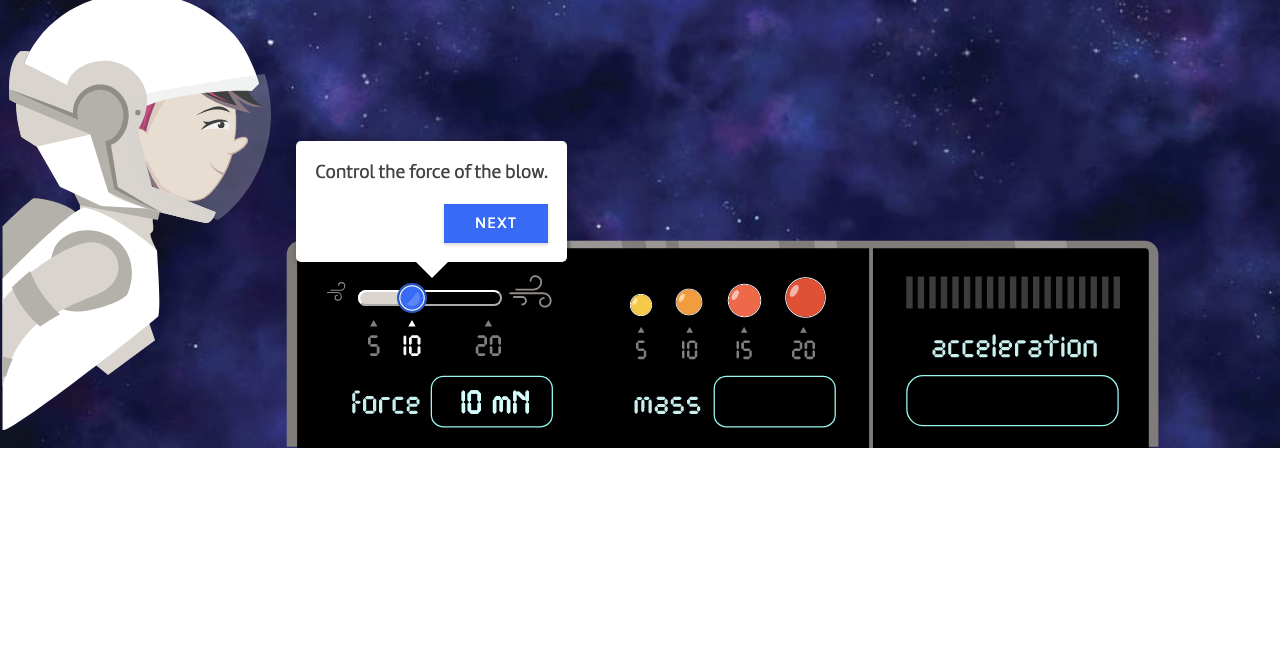Newton's Second Law
Simulation
It's time to journey into frictionless space and discover the relationship between force, mass and acceleration for ourselves.
You'll control the force our astronaut uses to blow on the ball, and the mass of the ball itself, and measure the resulting acceleration.

Instructions
Get your notebook and draw up a table.
Left-hand column should be 5, 10 and 20 millinewtons (mN).
Top-most row should be 5, 10, 15, 20 grams (g).
Vary the force and mass in the simulation to complete your table.
Draw a graph.
On the y-axis put "Force (nM)"
On the x-axis put "Mass (g)"
Plot your data from the table
Discussion question
What is the mathematical relationship between force, mass and acceleration?
Details
NGSS
- PE | HS-PS2-1: Analyze data to support the claim that Newton’s second law of motion describes the mathematical relationship among the net force on a macroscopic object, its mass, and its acceleration.
Learning Objectives
Discover the relationship between force, mass and acceleration.
Concepts
Force
Mass
Acceleration
Newton's Second Law

